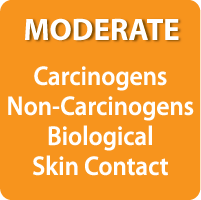Worker Hazards in Medical Settings
Medical professionals are exposed to a wider variety of work-related hazards than most. Because they work around and with hazards
in their industry, and deal with the injuries and illnesses caused by hazards in other industries. Potential illnesses and injuries
can occur through:
- Preparation and administration of chemicals, radiation and hazardous
drugs.
- Working with the ill and injured.
- Mental and physical strain of working in a stressful environment.
- CANCER AND CHEMICAL EXPOSURE:
- Exposure to the mercury released from broken sphygmanometers and thermometers.
- Potential for exposure to anesthetic gases and other hazardous
drugs.
- RISK FOR INFECTION AND INJURY:
- Working with ill and injured patients can increase the risk of disease transmission.
- Handling needles and other medical instruments can increase risk of sharps injury.
- Exposure to biological and chemical agents on contaminated patients.
- ALLERGIC REACTIONS AND SKIN IRRITATION:
- Latex products, such as ordinary exam gloves, can cause allergic reactions.
- Handling chemicals and products that can cause contact dermatitis.
Preventing Exposure and Lowering Your Risk
- EDUCATION:
- Know the proper procedures for the equipment you use and Follow Them!
- Review the MSDS Sheets for the chemicals and products you work with.
- Use established infection control procedures to protect yourself and those around you.
- AWARENESS:
- Inspect your work area and equipment regularly.
- Ensure that pharmaceuticals and hazardous substances are properly secured.
- Report any problems with chemicals or equipment, such as spills or breakdowns, immediately.
- PROTECTION:
- Wear the proper personal protective equipment (PPE) for each activity.
- Ensure your own health with regular physicals and up-to-date vaccinations.

-
Back to Healthy Workplaces - Medical Professions.
 Please note: Some of the files available on this page are in Adobe PDF format which requires Adobe Acrobat Reader. A free copy of Adobe Acrobat Reader can be downloaded directly from Adobe . If you are using an assistive technology unable to read Adobe PDF, please either view the corresponding text only version (if available) or visit Adobe's Accessibility Tools page.
Please note: Some of the files available on this page are in Adobe PDF format which requires Adobe Acrobat Reader. A free copy of Adobe Acrobat Reader can be downloaded directly from Adobe . If you are using an assistive technology unable to read Adobe PDF, please either view the corresponding text only version (if available) or visit Adobe's Accessibility Tools page.

